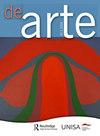“Your Shadow Blocks My Sun”: Reading Alternative Narratives in The New Parthenon and Other Films by Penny Siopis
IF 0.1
0 ART
引用次数: 0
Abstract
Abstract In The New Parthenon, as with her other films, Penny Siopis pieces together fragments of found footage of anonymous home videos, shot handheld on 8 or 16 mm film. The films are digitised first for sampling, but not digitally remastered, and are then combined with music and subtitles from various sources. These films narrate the stories of individuals, set against significant historical and political events. Evocativeness and anxiety are induced by the un-specificity of the connections between images and subtitles, heightened by the materiality of the amateur home video footage, often centred on quotidian family life and holidays, that has been reframed to narrate events that continue to reshape nations. I introduce the construction of a nation as a political community and examine how Siopis subverts narratives that connect ancient and contemporary Greece and its own internal antisemitic and nationalist conflicts to those of apartheid South Africa and imperialist Britain. I propose that the numerous representations of souvenir replicas and icons in The New Parthenon appear to perform a witnessing role to public and personal histories, while symbolically holding historical traumas in frozen form. I focus on Siopis’s mediated views of the Acropolis structures in the film, considering the symbolic bleaching of the Parthenon Marbles in the nineteenth-century British imaginary to track whiteness as a signifier of power. Siopis migrates this to signifiers of apartheid South Africa in order, I argue, to critique the narratives that maintain national imaginaries and to propose instead an aesthetics of reattachment.“你的影子挡住了我的太阳”:阅读Penny Siopis的《新帕特农神庙》和其他电影中的另类叙事
摘要在《新帕特农神庙》中,与她的其他电影一样,佩妮·西奥皮斯将发现的匿名家庭视频片段拼凑在一起,这些视频是用8或16毫米的胶片手持拍摄的。这些电影首先进行了数字化采样,但没有进行数字重制,然后与各种来源的音乐和字幕相结合。这些电影讲述了个人的故事,背景是重大的历史和政治事件。图像和字幕之间联系的不特定性引发了唤起和焦虑,业余家庭视频片段的实质性增强了这一点,这些视频片段通常以日常家庭生活和假期为中心,并被重新定义为讲述继续重塑国家的事件。我介绍了一个国家作为一个政治共同体的构建,并考察了西奥皮斯如何颠覆将古代和当代希腊及其内部反犹太主义和民族主义冲突与种族隔离的南非和帝国主义英国的冲突联系起来的叙事。我认为,《新帕特农神庙》中的众多纪念复制品和图标似乎对公众和个人历史起到了见证作用,同时象征性地以冻结的形式保存着历史创伤,考虑到19世纪英国人想象的帕特农神庙大理石的象征性漂白,以追踪白人作为权力的象征。我认为,Siopis将这一点转移到种族隔离南非的象征上,是为了批判维持民族想象的叙事,并提出一种重新连接的美学。
本文章由计算机程序翻译,如有差异,请以英文原文为准。
求助全文
约1分钟内获得全文
求助全文

 求助内容:
求助内容: 应助结果提醒方式:
应助结果提醒方式:


